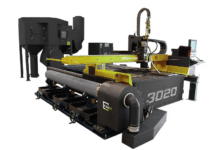 We all like to have data to support our decisions. But we tend to look at this myopically – a decision needs to be made, and we simply need some data to justify it. True, almost everyone, from retail companies to agricultural manufacturers, strives to make data-backed decisions, but what is the right way to use data to make better, more accurate decisions?
We all like to have data to support our decisions. But we tend to look at this myopically – a decision needs to be made, and we simply need some data to justify it. True, almost everyone, from retail companies to agricultural manufacturers, strives to make data-backed decisions, but what is the right way to use data to make better, more accurate decisions?
It begins with understanding what type of data you need for a particular decision. If you need to find the cause of a problem or predict what will happen in a specific part of your business, the type of data you choose is essential to success.
For instance, when you want to see what trends occurred in your business in the last quarter and find the data-backed explanation for them, descriptive and diagnostic data will come in handy. But in case you want to build a strategy or even shape the future of your business, predictive and prescriptive analytics will be much more applicable.
Here are the four types of data and how they can help you make better decisions:
Descriptive Data
Descriptive data answers the “what happened” question. Think of an e-commerce store owner who wants to know what products were the least popular in California during the Christmas season. Descriptive data identifies information on what items people were least willing to buy in that period. It provides a historical view of past performance and is typically easy to capture.
Diagnostic Data
While descriptive data shows us what happened, the diagnostic data answers the question of why it happened by seeking a cause-and-effect relationship. With diagnostic data, you can quickly identify patterns and how different factors relate to each other. For instance, marketing departments can use diagnostic data to define why some campaigns were more effective than others.
Predictive Data
Predictive data uses historical or current data to forecast potential outcomes. For most companies, this is where the “magic” happens. Predictive data is more complex than descriptive and diagnostic data, and it always requires data scientists’ expertise. For example, Vodaphone decided to offer special deals on plans and roaming to the clients who were most likely to go skiing. To define those clients, Vodafone’s analysts built a predictive model trained on the data of the people who had been using their phones at major ski resorts throughout Europe in the past.
Prescriptive Data
Prescriptive data is based on predictive data but supplements its outcomes with recommendations for the future. In other words, this type of analytics answers the question “How to make something happen?” providing decision-makers with the optimal action plan. For instance, airline companies can constantly adjust ticket prices depending on ever-changing factors like weather conditions, fuel prices, and customer demand.
Every type of data is intertwined with the others in the analysis cycle. The latter gives businesses answers to questions like what happened, why it happened, what could happen next, and how to make something happen. By using descriptive and diagnostic data, you can clearly identify what brought you to your current state. Meanwhile, predictive or prescriptive data will provide you with a clear vision of future perspectives. All these types of data have their function – it’s up to you to understand the decision you’re trying to make, and what you need to make it.
Why We Misinterpret Wants and Needs as Problems
I’ve spoken with hundreds of executives, CEOs, and business leaders about their organizational challenges. Across all industries, many of the problems are the same. We need more sales/revenue/members. We need more innovation from our employees. We need to reduce costs. We need to reduce attrition (of customers/employees). Sound familiar?
In addition, there are other, more narrow, and specific problems that are voiced as well. We need better outcomes. We need more attendance/participation (whether with a product or service). We need people to have more interest (in what we do, what we sell, what we offer, etc.). It really doesn’t matter what you do or what your company does – these are many of the refrains you’ve probably heard.
You’ve likely heard them many times over, possibly each and every year as the company sets its “key objectives” for the upcoming business season. If it’s so crystal clear these are the problems, why haven’t they been solved? Because these aren’t really the problems.
These statements are not problems, they’re “wants”. Replace “need” every time you hear a leader state the organization’s objectives with “want” and you’ll understand. We all have “wants”. The hard work comes with understanding and deciphering what the actual problem is – and then how to solve it. But we more often than not assume the “want” is the problem, and desperately struggle to find quick, easy, silver-bullet solutions to these broad and generic “wants”.
Understanding a problem takes a lot of research, effort, data, insight, and curiosity. It’s not simply proclaiming a “want” and then delegating the task of resolving it to your team. Understanding a problem requires discovering the causes, catalysts, influences, and context surrounding the “want”.
For example, take the “want” of increasing sales. Of course – every organization wants to increase sales. Defining this problem requires understanding where sales are declining, what things have changed in the business environment to influence the decline (which could be a lot of things), where things are working well (and why), and what has changed within the customer environment (needs, expectations, etc.), to name a few.
Alternatively, organizational leaders will translate “wants” into directives. We need (want) to increase brand awareness. We need (want) to better differentiate our products/services/offerings. Again, these “wants” are not clearly defined problems. How do customers perceive your product/organization today? Where do they find out/learn about your offerings now? Where do they gather and congregate? How do you position the organization today (if at all)? What has changed in the competitive landscape and customer expectations which has caused market confusion/diminished presence?
Proclamations don’t easily get translated into action, because they assume the problem’s defined when it’s far from it. Too many organizations don’t take the time to dig into the details. They often default to past initiatives, activities, or tactics – all of which deliver less than stellar results, because the context and circumstances have changed. Or they examine high-level numbers (such as sales being low in one geographic area) and simply proclaim to increase numbers there. (This is yet another “want”, just a little more specific.)
If you really want (ha!) to address your organization’s challenges, start with having a stronger, better understanding of the problem. Learn the what, where, when, why, and how of the challenge. Dig into data. Gather new data if you don’t have what you need to develop a comprehensive assessment of the challenge. This is why physicians run so many tests and evaluations – they want to understand specifics – where the problem is stemming from. If you don’t know specifically where the bleed is, you’re not going to stop it anytime soon.
About the Author
Andrea Belk Olson is a speaker, author, applied behavioral scientist, and customer-centricity expert. As the CEO of Pragmadik, she helps organizations of all sizes, from small businesses to Fortune 500, and has served as an outside consultant for EY and McKinsey. Andrea is the author of The Customer Mission: Why it’s time to cut the $*&% and get back to the business of understanding customers and No Disruptions: The future for mid-market manufacturing.
She is a 4-time ADDY® award winner and host of the popular Customer Mission podcast. Her thoughts have been continually featured in news sources such as Chief Executive Magazine, Entrepreneur Magazine, The Financial Brand, Industry Week, and more. Andrea is a sought-after keynote speaker at conferences and corporate events throughout the world. She is a visiting lecturer and Director of the Startup Business Incubator at the University of Iowa’s Tippie College of Business, a TEDx presenter, and TEDx speaker coach. She is also a mentor at the University of Iowa Venture School.




















